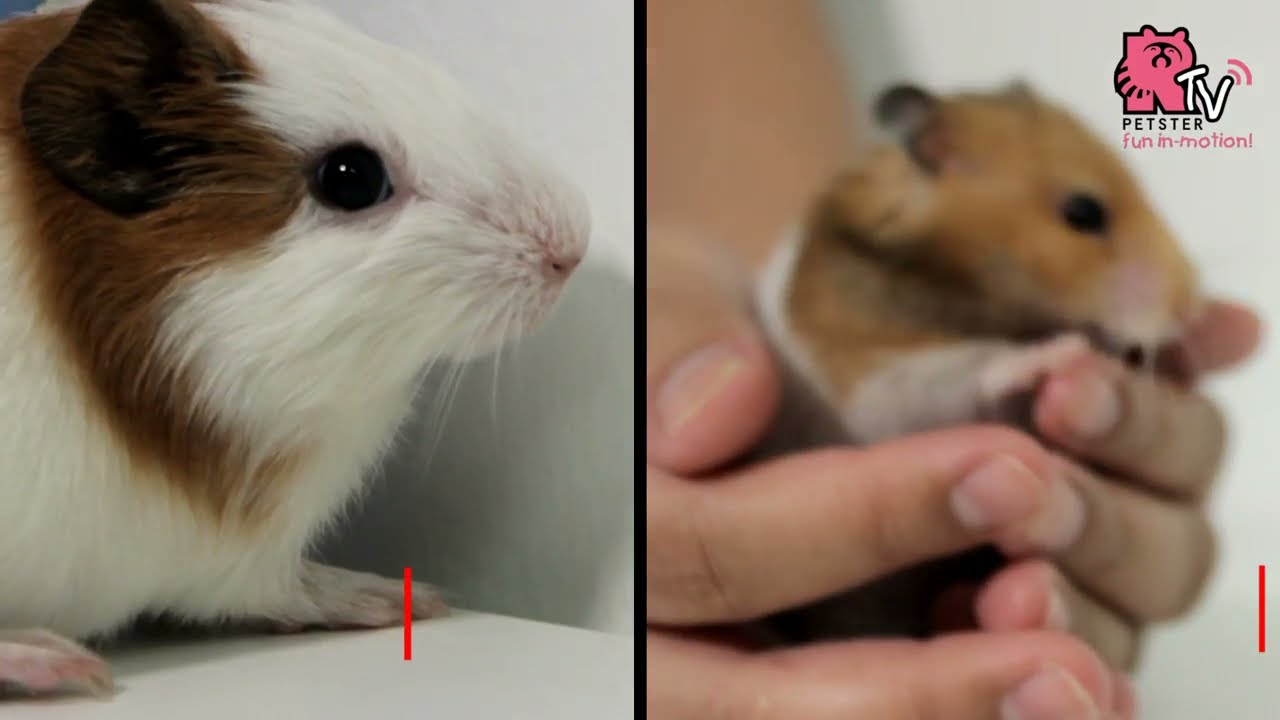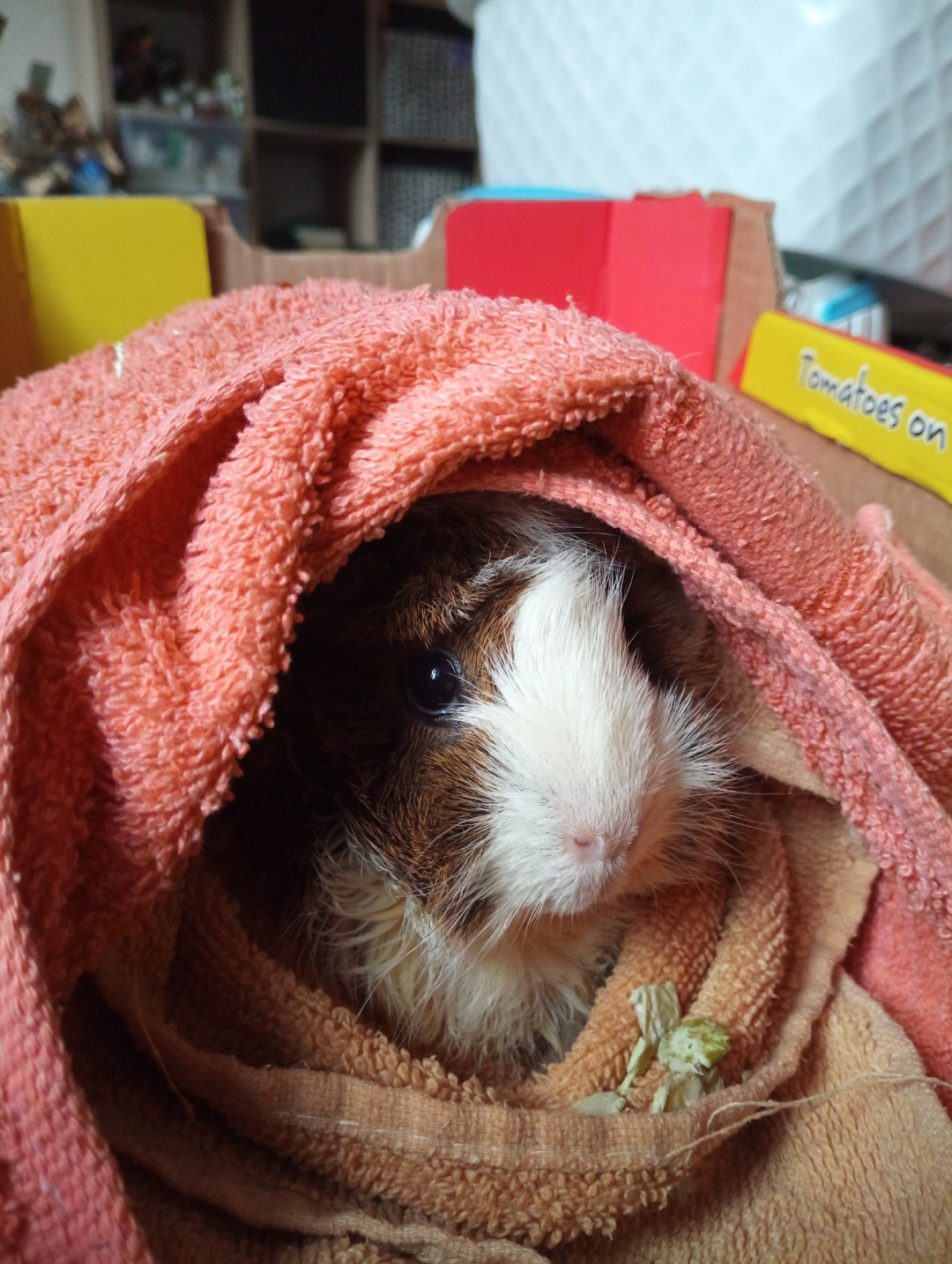When it comes to choosing a small, furry companion, there are many options available. Two of the most popular choices are hamsters and guinea pigs, also known as pocket pets due to their manageable size. However, despite their similarities, these critters possess distinct characteristics that set them apart from each other. In this comprehensive guide, we’ll delve into the key differences between hamsters and guinea pigs, helping you make an informed decision on which pet is best suited for you.
>> READ MORE:
- Guinea Pig Lifespan A Comprehensive Guide
- Normal Guinea Pig Heart Rates A Comprehensive Guide
- The Guinea Pig Nightlife Deciphering the Nocturnal Myth
- Do Guinea Pigs Hibernate? Understanding Their Winter Needs
Contents
- 1 Physical Characteristics: Distinguishing Hamsters and Guinea Pigs
- 2 Size and Weight: A Quick Comparison
- 3 Lifespan and Care Requirements: Understanding the Differences
- 4 Personality and Temperament: Exploring the Unique Traits
- 5 Housing and Exercise Needs: Creating Suitable Environments
- 6 Diet and Nutrition: Meeting the Dietary Requirements
- 7 Conclusion
Physical Characteristics: Distinguishing Hamsters and Guinea Pigs

At first glance, hamsters and guinea pigs may appear similar, but upon closer inspection, their physical characteristics reveal significant differences. Let’s take a closer look at each of these charming creatures.
Hamsters:
Hamsters belong to the family Cricetidae and are characterized by their plump, rounded bodies, short legs, and stubby tails. They come in a variety of sizes and fur types, with different colors and patterns. Some of the most common varieties of hamsters include Syrian, Dwarf, Roborovski, and Chinese.
Size:
The size of hamsters varies depending on the species. Generally, they range anywhere from 3-7 inches in length, with Syrian hamsters being the largest and Dwarf hamsters being the smallest.
| Species | Length (inches) |
|---|---|
| Syrian | 5-7 |
| Dwarf | 2-4 |
| Roborovski | 2-3 |
| Chinese | 4-5 |
Weight:
Similar to their size, hamsters’ weight also varies based on the species. On average, they weigh between 1-8 ounces, with Syrian hamsters being the heaviest.
| Species | Weight (ounces) |
|---|---|
| Syrian | 6-8 |
| Dwarf | 1-2 |
| Roborovski | 0.7-1 |
| Chinese | 4-5 |
Lifespan:
Hamsters have relatively short lifespans compared to other pets, with an average lifespan of 2-3 years. However, this varies depending on the species, with Dwarf hamsters having a shorter lifespan of 1-2 years and Syrian hamsters living up to 3-4 years.
Guinea Pigs:
Guinea pigs belong to the family Caviidae and look quite different from hamsters. They have larger bodies, more prominent ears, and do not have tails. Their fur can range from short and smooth to long and rough, with a variety of colors and patterns.
Size:
In comparison to hamsters, guinea pigs are much larger. On average, they measure around 8-10 inches in length, making them almost double the size of hamsters.
| Species | Length (inches) |
|---|---|
| American | 8-10 |
| Abyssinian | 8-12 |
| Peruvian | 10-14 |
| Teddy | 8-12 |
Weight:
Guinea pigs also weigh significantly more than hamsters. The average weight of a guinea pig is around 1-2 pounds, with some breeds like the Peruvian weighing up to 3 pounds.
| Species | Weight (pounds) |
|---|---|
| American | 1-2 |
| Abyssinian | 1-2 |
| Peruvian | 2-3 |
| Teddy | 1-2 |
Lifespan:
Compared to hamsters, guinea pigs have a longer lifespan. On average, they live for 4-5 years, with proper care and nutrition. Some may even live up to 8 years.
Size and Weight: A Quick Comparison

To summarize, hamsters are generally smaller and lighter compared to guinea pigs. This makes them more suitable for owners who prefer smaller pets or have limited space available. Additionally, their smaller size also means that they require less food and resources, making them more budget-friendly.
On the other hand, guinea pigs are larger and heavier, which can make them more challenging to handle for younger children or those with limited mobility. They also require more space and resources, so owners should be prepared for the additional cost of caring for these adorable creatures.
Lifespan and Care Requirements: Understanding the Differences

When it comes to caring for any pet, understanding their lifespan and specific care requirements is crucial. Let’s take a closer look at how hamsters and guinea pigs differ in this aspect.
Hamsters:
As mentioned earlier, hamsters have an average lifespan of 2-3 years, although some species may live up to 4 years. However, their short lifespan means that they are not long-term companions, and owners should be prepared for the inevitable loss of their furry friend.
In terms of care requirements, hamsters need a clean and spacious living environment, preferably a cage with plenty of room for exercise and play. They also require a diet consisting of commercially available hamster food, supplemented with fresh fruits and vegetables.
Guinea Pigs:
Guinea pigs have a significantly longer lifespan compared to hamsters, with an average of 4-5 years. They can live up to 8 years if well-cared for, making them a more long-term commitment.
In terms of care requirements, guinea pigs also need a clean and spacious living environment, preferably a large enough cage to accommodate their size and provide ample room for exercise. They require a diet of fresh hay, pellets, and fresh fruits and vegetables to maintain their overall health.
Personality and Temperament: Exploring the Unique Traits

When it comes to personality and temperament, both hamsters and guinea pigs have distinctive traits that make them unique. Let’s take a closer look at what sets them apart.
Hamsters:
Hamsters are known to be solitary creatures and prefer the company of other hamsters. They can be territorial and do not typically do well with other hamsters, except for breeding purposes. They also prefer to sleep during the day and are most active at night, making them ideal pets for those who work or go to school during the day.
In terms of handling, Syrian hamsters tend to be more docile and calm compared to Dwarf hamsters, which can be more skittish and prone to nipping. However, with proper handling and socialization, hamsters can become friendly and affectionate pets.
Guinea Pigs:
Unlike hamsters, guinea pigs are highly social animals and thrive in pairs or small groups. They love the company of other guinea pigs and can become depressed or anxious if kept alone. They are also diurnal animals, meaning they are most active during the day and sleep at night.
In terms of handling, guinea pigs are generally more relaxed and easy-going compared to hamsters. They enjoy being held and petted by their owners and can even learn simple tricks with proper training.
Housing and Exercise Needs: Creating Suitable Environments

Both hamsters and guinea pigs require a suitable living environment to thrive. Let’s take a closer look at what their housing and exercise needs entail.
Hamsters:
Hamsters need a spacious and clean cage with plenty of room to exercise and play. They are natural burrowers, so a cage with deep bedding is essential. Additionally, they also need plenty of toys and hiding places to keep them mentally stimulated.
As for exercise, hamsters should have access to a wheel or other toys that allow them to run and expend their energy. However, it’s important to note that Dwarf hamsters may not be able to use the same sized wheels as Syrian hamsters due to their smaller size.
Guinea Pigs:
Guinea pigs also need a large and clean cage to accommodate their size and provide enough room for exercise. The minimum recommended cage size for two guinea pigs is 7.5 square feet, but the bigger, the better.
In addition to a suitable living environment, guinea pigs also require daily exercise outside of their cage. They are active animals and need opportunities to run, explore and play. Owners can create a safe and secure play area for their guinea pigs using an exercise pen or baby gates.
Diet and Nutrition: Meeting the Dietary Requirements
Proper nutrition is crucial for the health and well-being of any pet. Let’s take a closer look at the dietary requirements for both hamsters and guinea pigs.
Hamsters:
Hamsters require a diet consisting mainly of commercially available hamster food, which can usually be found in most pet stores. This food provides them with the necessary vitamins and minerals for their overall health. In addition to this, hamsters should also have access to fresh fruits and vegetables as treats, such as carrots, apples, and cucumber.
It’s essential to monitor how much food your hamster consumes to avoid overfeeding, which can lead to obesity and other health issues. Clean, fresh water should also be provided at all times.
Guinea Pigs:
Guinea pigs have more specific dietary requirements compared to hamsters. Their diet should consist primarily of fresh hay, such as timothy or orchard grass hay, which provides them with the necessary fiber for their digestive health. They should also have access to high-quality pellets specially formulated for guinea pigs, along with fruits and vegetables as treats.
It’s important to note that guinea pigs cannot synthesize Vitamin C on their own, so it’s crucial to provide them with a daily supplement or fresh sources of Vitamin C like bell peppers, kale, or strawberries.
Conclusion
In conclusion, both hamsters and guinea pigs make fantastic pocket pets, but they possess distinct characteristics that set them apart from each other. Hamsters are smaller, solitary animals with a shorter lifespan, while guinea pigs are larger, social creatures that require more space and resources. In terms of personality, handling, and care requirements, they also differ significantly.
Ultimately, when choosing between a hamster and a guinea pig, it’s essential to consider your lifestyle, preferences, and ability to provide proper care. Whichever you decide on, with love and attention, both of these adorable critters will make wonderful additions to any family.
